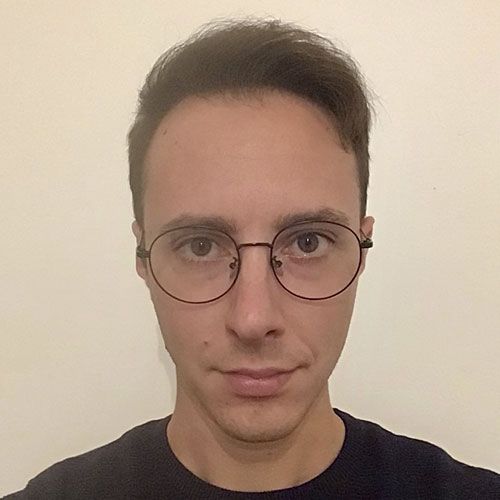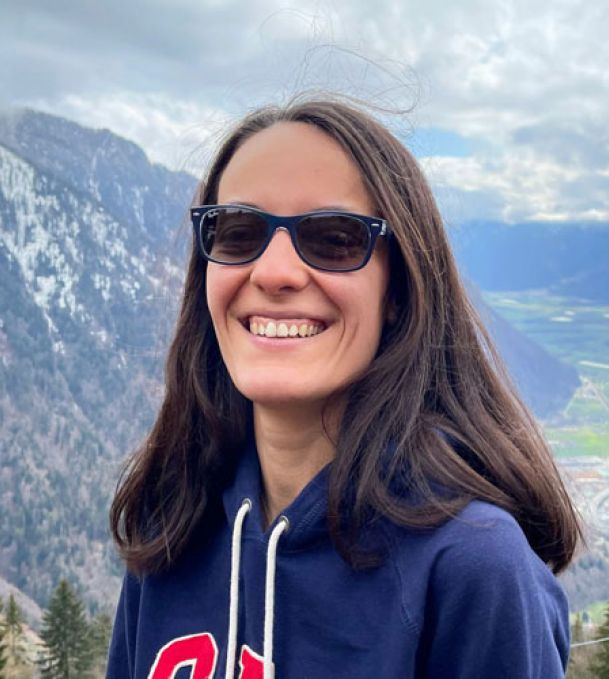NeuTouch 2022 International School on Technologies for Touch
Our Summer School is here. September 26 - 30, 2022.
Be prepared for some great talks, productive panel discussions, soft skills, and the work that our ESRs have been carrying out.
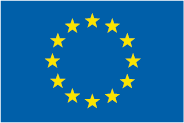
Hosted ny NeuTouch and INTUITIVE
EU Horizon 2020 Innovative Training Networks NeuTouch 813713 & INTUITIVE 861166


General
The NeuTouch International Summer School is a one-week in-presence summer school focused on technologies for touch. The event will include talks from some of the top-tier international expertise of the field, discussions and lectures. The school is hosted by EU H2020 Training Networks NeuTouch 813713 & INTUITIVE 861166.
Program
Speakers
Electronic-skin systems for robotics and healthcare
The talk will introduce artificial skin systems based on piezoelectric polymeric materials. Basic features of PVDF and P(VDF-TrFE) and of the dedicated interface electronic circuit solutions will be highligthed. Distributed pressure sensing systems based on arrays of piezoelectric polymeric transducers and two examples of applications in robotics and healthcare will be detailed.

Maurizio Valle
Maurizio Valle (MV) received the M.S. degree in Electronic Engineering in 1985 and the Ph.D. degree in Electronics and Computer Science in 1990 from the University of Genova, Italy. From December 2019, MV is full professor of Electronics at the DITEN, University of Genova where he leads the Connected Objects, Smart Materials, Integrated Circuits – COSMIC laboratory. MV has been and is in charge of many research contracts and projects funded at local, national and European levels and by Italian and foreign companies. MV is co-author of more than 250 papers on international scientific journals and conference proceedings with peer review. MV is IEEE senior member and member of the IEEE CAS Society and IEEE Solid State Circuit Society. His research interests include bio-medical circuits and systems, electronic/artificial sensitive skin, tactile sensing systems for prosthetics and robotics, neuromorphic touch sensors, electronic and microelectronic systems.
Skin-inspired stretchable electronics and adjustable soft structures for damping
The human skin not only is the largest human organ, it also serves as large area sensor and as protective layer. Inspired by the ingenious design of the skin stretchable sensors and electronic circuits have been developed. Tackling the interfacing issues of soft-to-rigid-active material interfaces, silicones and novel silicone composites with a gradient in stiffness were developed. In addition, skin-inspired damping structures were investigated for adjusting their stiffness/damping properties. Combining these two approaches we aim at creating soft skinlike damping sturctures with sensing cababilities.
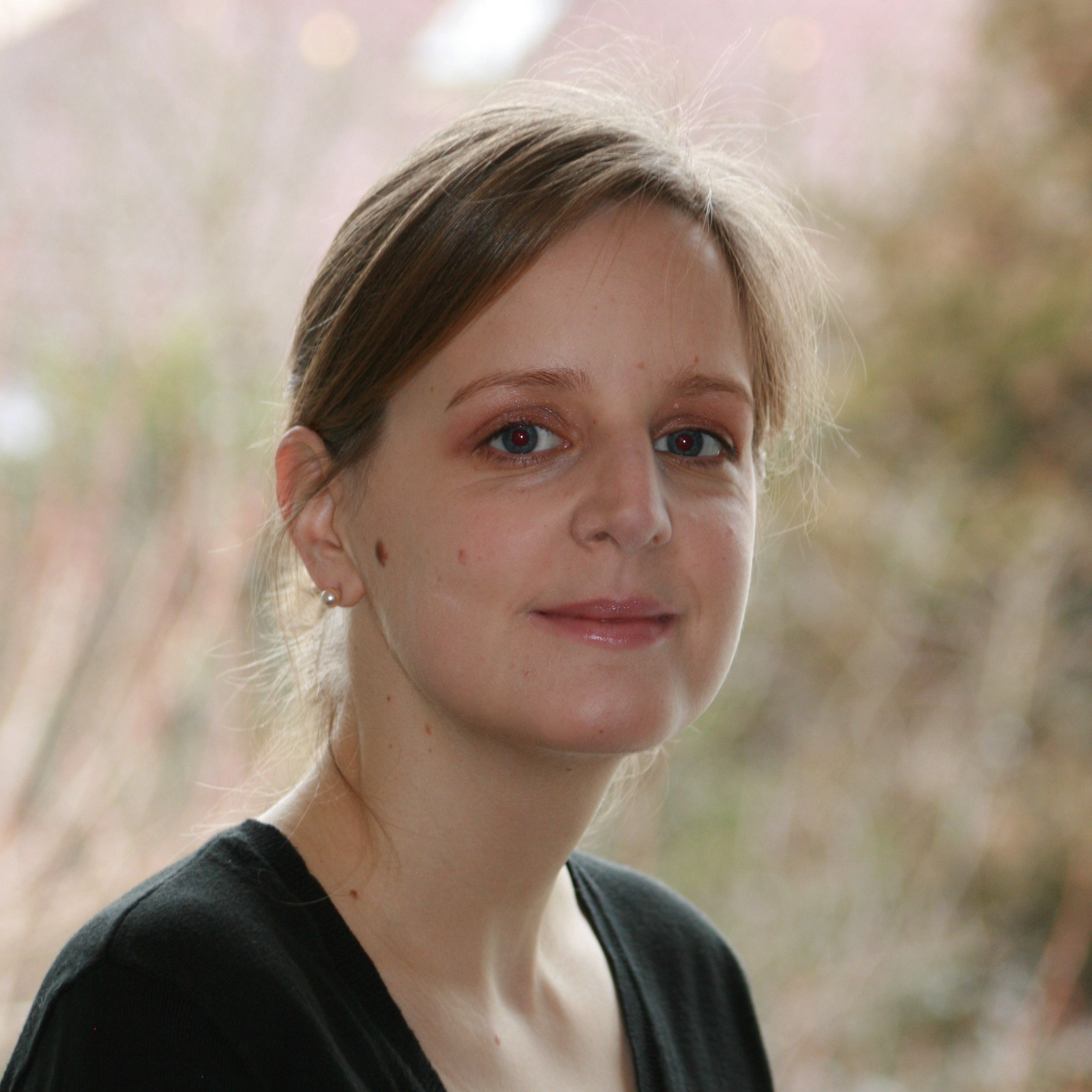
Ingrid Graz
Ingrid Graz is an associate professor at the Johannes Kepler University (JKU) Linz in Austria working on stretchable electronics and soft robotics. After receiving a Ph.D. (2006) in physics at JKU researching flexible polymer sensors, Ingrid spent 3 years in the Department of Engineering, University of Cambridge, UK. There she developed stretchable transistors and sensors. In 2011 she returned to JKU as an assistant professor and completed her habilitation on skin-inspired electronics in 2015. She has authored and co-authored over 40 peer-reviewed papers and is head of the Christian Doppler Laboratory for Soft Structures for Vibration Insulation and Impact Protection.
Active Visuo-Tactile Interactive Perception and Deep Cross-Modal Learning for Object Grasp and Manipulation in Robotics
For robots to execute tasks in unstructured environments, visuo-tactile plays a key role. The vision-based technologies have become essential for an effective analysis of the scene, path planning, and observing the behavior of humans in the robot workspace. However, vision alone is often not enough to achieve sufficient perception capabilities of robotic systems in unstructured environments, due to variable light conditions, occlusions in cluttered scenes, and a requirement for contact information between robot and environment. Tactile perception is of fundamental importance for robots that physically interact with the external environment. Wisely leveraging tactile information provides robots with enhanced perceptive capabilities. For these reasons, interactive tactile perception is becoming important research directions to support visual perception. Even though tactile and visual perception has gained a great deal of interest, the field of active visuo-tactile interactive perception and cross-modal learning have not been profusely explored in robotics. A robotic system with active visuo-tactile perception and cross-modal learning capability can leverage apriori knowledge acquired with one modality and efficiently use it with other at execution time. In this talk, I will present our recent developed full-fledged active visuo-tactile perception and deep-cross modal learning framework for the robotics systems to efficiently localize cluttered objects in an unknow workspace and to recognize objects, previously inspected with one modality like vision, via tactile modality.
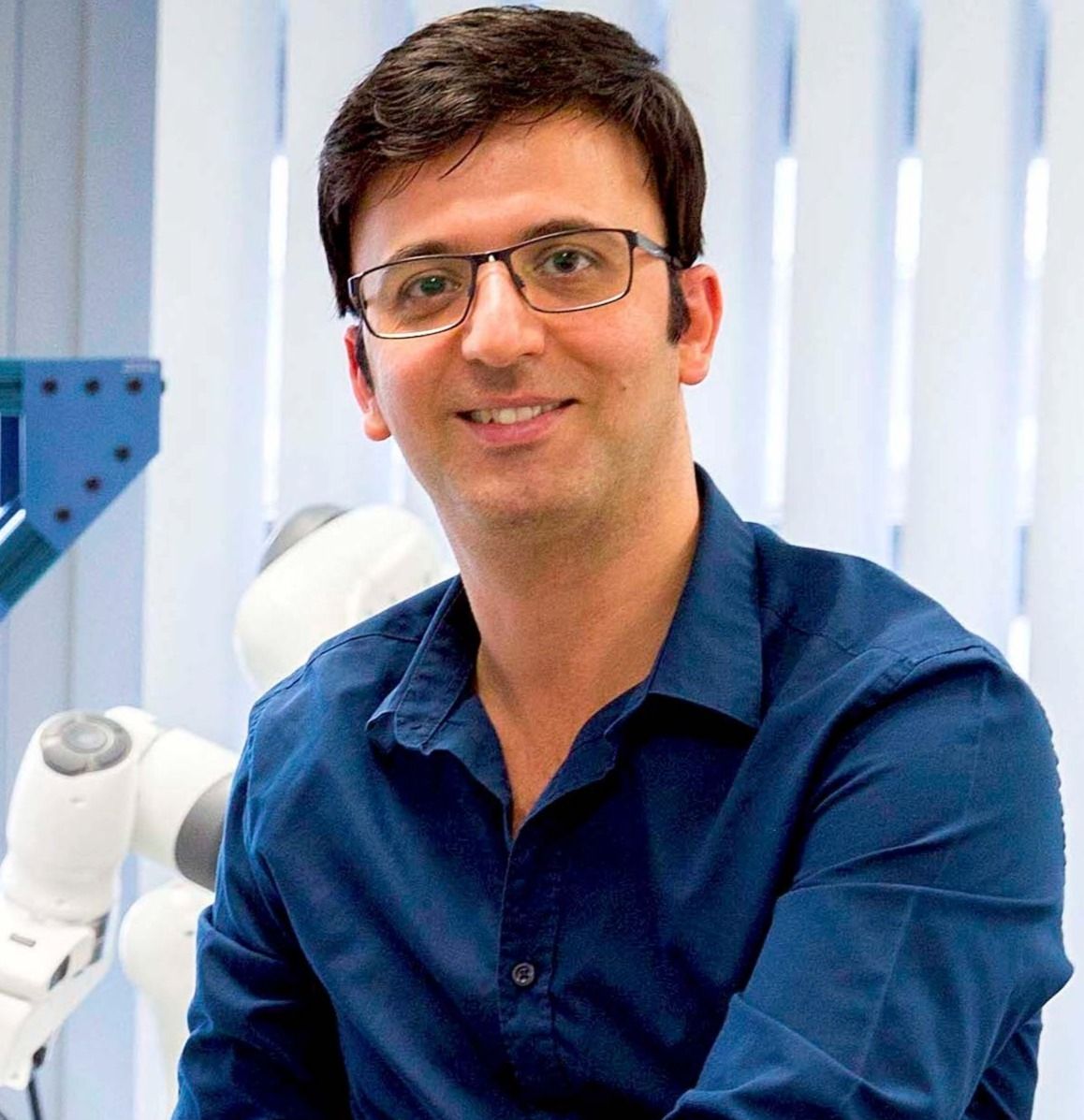
Mohsen Kaboli
Dr. Mohsen Kaboli is an assistant professor and lead for Robotics, AI, and Tactile Intelligence at BMW Group, Germany and Donders Institute for Brain and Cognition, Radboud University, Netherlands, since September 2018. He is the director and PI of Robotic and Tactile intelligence Group Lab (RoboTac).He enjoys research at the intersection of Robotics, Interactive Perception, Machine Learning, and Control applied to problems in Mobile Robotic, Robotic Grasping and Manipulation, and Human-Robot interaction and collaboration.
He is a PI of several European funded research projects, such as PHASTRAC, INTUITIVE (Tactile User Interface), iNavigate (Brain Inspired Perception for Navigation and Mobility), SmartNets, and etc. Formerly, he was a group leader of tactile robotic and postdoctoral research fellow at the Institute for Advanced Studies (IAS), the Technical University of Munich (TUM), Germany from September 2017 till August 2018. He received his Ph.D. degree with the highest distinction (summa cum laude) in robotics focusing on tactile perception and learning in robotics from TUM in 2017. He was awarded the best European Ph.D. thesis prize in robotics, Georges Giralt Ph.D. Award (finalist).
Mohsen Kaboli is the inventor/co-inventor of approximately 20 patents and author of approximately 40 Journals, proceedings, and editorials. His research over the past 10 years has been bridging several research domains, the most important ones being tactile intelligence, AI, and robotics. This also been acknowledged by the IEEE, when being named IEEE Senior Member in 2018 for his“contributions in AI and Robotics.
Tactomorphics for Prosthethics
Prostheses improved in their motor performance with the development of dexterous multifinger manipulators. However, most modern prosthesis lack the sense of touch and how that information is relayed back to the amputees is even less understood and developed. Tactomorphics utilizes design of tactile sensors that mimic the receptors in the skin and encodes the information by modeling the receptors in the skin using the spiking neural code. Once this neural code is implemented, algorithms are developed to address conditions encountered in palpation. This talk will present the model, neuromorphic encoding, and then how primitives of palpation, edge, shape, texture, and functions of slip and grasp can be implemented. For feedback, we will explore two options, vibration and electrocutaneous stimulation. Computational modeling results and experimental results with able-bodied and amputees will be presented. Further work would involve developing machine learning methods (preferably embedded) and feedback techniques (preferably noninvasive) for enhancing touch perception.
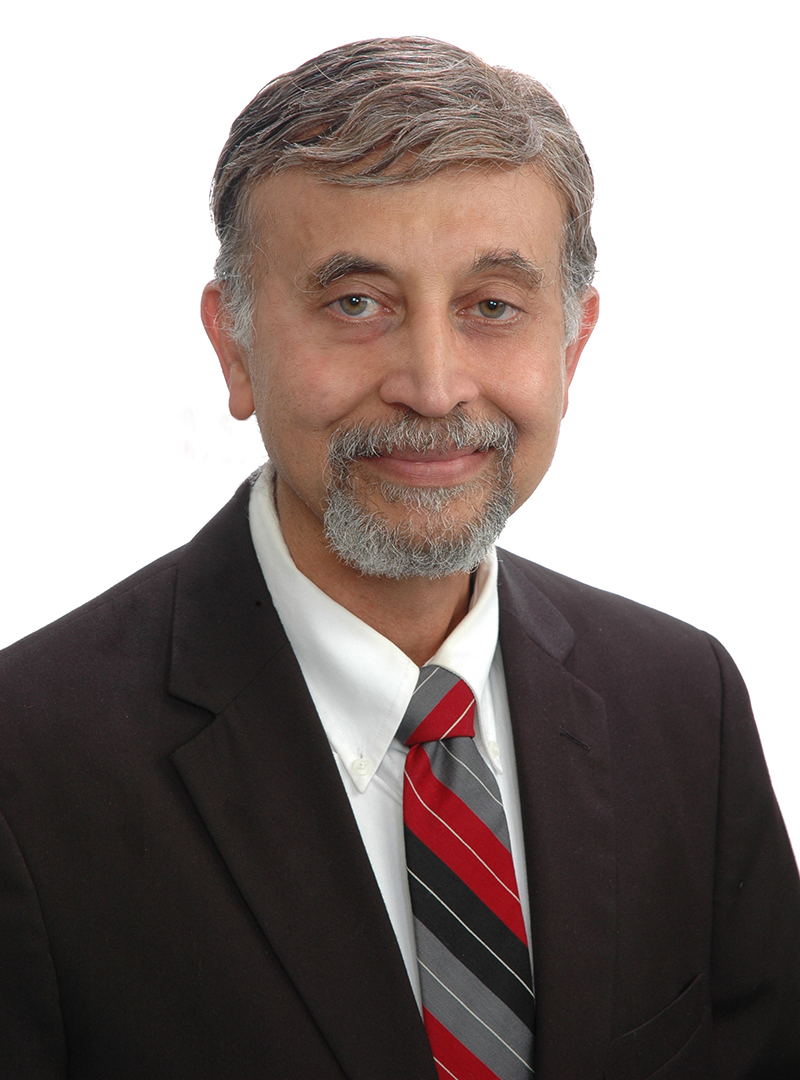
Nitish Thakor
Nitish Thakor is a Professor of Biomedical Engineering at Johns Hopkins University. His technical expertise is in the fields of Medical Instrumentation and Neuroengineering, where he has carried out research on many technologies for brain monitoring, implantable neurotechnologies, neuroprosthesis and brain-machine interface. He has published over 430 refereed journal papers (GH Index 93), obtained 16 US and international patents and co-founded 4 active companies. He was previously the Editor in Chief of IEEE Transactions on Neural Systems and Rehabilitation Engineering, and currently the EIC of Medical and Biological Engineering and Computing (Springer/Nature). He received a Research Career Development Award from NIH and a Presidential Young Investigator Award from the NSF, and is a Fellow of AIMBE, Life Fellow of IEEE, BMES, and IAMBE. He is a recipient of a Distinguished Alumnus Award from Indian Institute of Technology, India, and a Centennial Medal from the University of Wisconsin School of Engineering. He was elected to the National Academy of Inventors in 2021.
Coupling living and artificial neurons beyond conventional neuromorphic devices
The interface between biological cells and non-biological materials has profound influences on cellular activities, chronic tissue responses, and ultimately the success of medical implants and bioelectronic devices. The optimal coupling between cells, i.e. neurons, and materials is mainly based on surface interaction, electrical communication and sensing. In the last years, many efforts have been devoted to the engineering of materials to recapitulate both the environment (i.e. dimensionality, curvature, dynamicity) and the functionalities (i.e. long and short term plasticity) of the neuronal tissue to ensure a better integration of the bioelectronic platform and cells. On the one hand, here we explore how the transition from planar to pseudo-3D nanopatterned inorganic and organic materials have introduced a new strategy of integrating bioelectronic platforms with biological cells under static and dynamic conditions. On the other hand, we investigate how organic semiconductors can be exploited for recapitulating electrical neuronal functions such as long term and short term potentiation. In this way, both the topology and the material functionalities can be exploited for achieving in vitro biohybrid platforms for neuronal network interfacing.
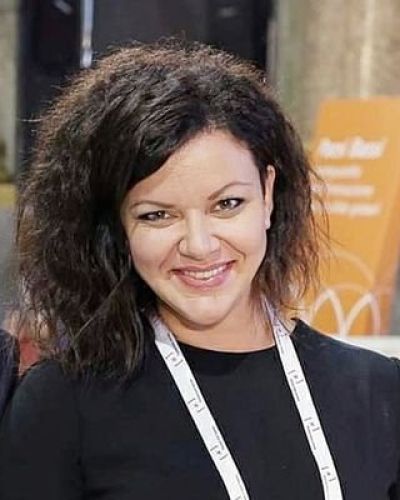
Francesca Santoro
Francesca Santoro received her Bachelor’s and Master’s degrees in Biomedical Engineering at the ‘Federico II’ University of Naples (Italy) with specialization in biomaterials. She received a PhD in 2014 in Electrical Engineering and Information Technology in a joint partnership between the RWTH Aachen and the Forschungszentrum Juelich (Germany) with a scholarship by the International Helmholtz Research School in Biophysics and Soft Matter (IHRS BioSoft). In October 2014, she joined the Chemistry Department at Stanford University (USA) and received a research fellowship in 2016 by the Heart Rhythm Society. She joined IIT in July 2017 as Principal Investigator of the 'Tissue Electronics' lab at CABHC-Naples. In 2018 she has been awarded the MIT Technology Review Under 35 Innovator ITALIA and EUROPE. She has been awarded an ERC Starting Grant in 2020. She is among the Inspiring Fifty Italy and is also the winner of the Falling Walls Science Breakthrough of the Year in Engineering and Technology in 2021. Since January 2022, she is Professor in Neuroelectronic Interfaces at RWTH Aachen and Forschungszentrum Juelich. She has been recently selected as a PI in the Interstellar Initiative by the New York Academy of Science.
Somatosensory Neuroprostheses for Sensing with Bionic Limbs
In the recent past, several research groups are studying the fascinating and futuristic research of connecting the human nervous system with bionic limbs. Striving to close the gap between humans and machines, this research is now working to create prosthetic limbs that utilize the direct neural stimulation of the nervous system to restore sensory-motor functions lost after an injury or a disease. Decades of technological developments have populated the field of brain-machine interfaces (BMI) and neuroprosthetics with several replacement strategies, neural modulation treatments, and rehabilitation strategies to improve the patients’ quality of life. The neuroprostheses are implantable devices designed to replace or improve the function of a disabled part of the nervous system. The different approaches for the restoration of sensory functions through neuroprostheses based on electrical neurostimulation will be presented. This field is now quickly expanding thanks to advances in neural interfaces, machine learning techniques, and robotics. In the next future, the neurotechnologies will continue to grow thanks also to faster and more advanced computer simulations allowing to test and validate these technologies even faster. The transformation of neurotechnologies blurs the boundaries between human and machine.
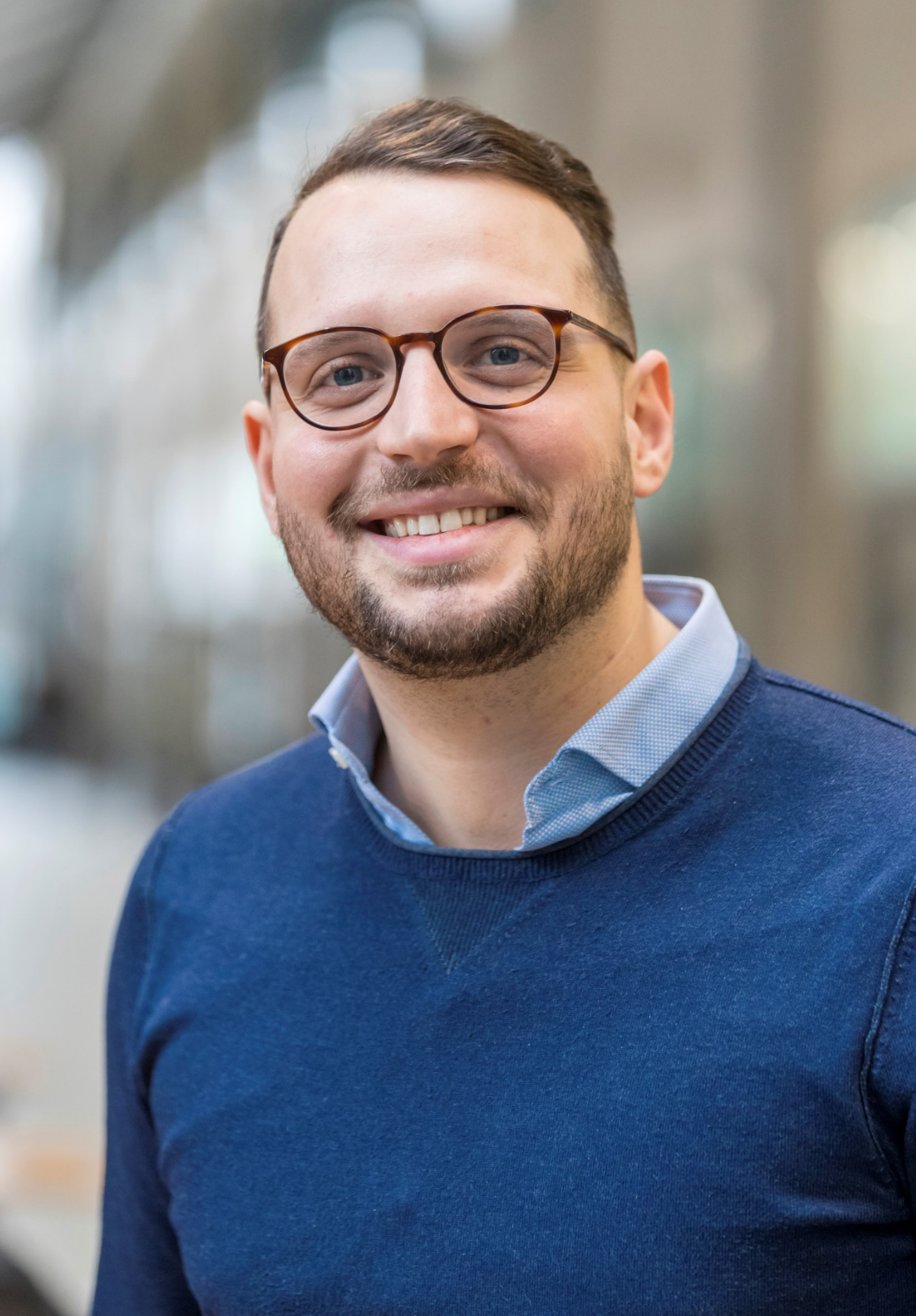
Giacomo Valle
Dr. Giacomo Valle received a B.S. in Biomedical Engineering in 2014 and an M.S. (cum Laude) in Bioengineering in 2016 from the University of Genoa, Italy. He then received a Ph.D in Biorobotics (cum Laude) at the The Biorobotics Institute, Scuola Superiore Sant’Anna (Pisa, Italy). Dr. Valle is currently a Postdoctoral researcher in the Neuroengineering Lab at ETH Zurich, Switzerland and he completed a Master in Bio-Entrepreneurship at the University of Bern. Dr. Valle has recently won the BRIDGE Proof of Concept 2020 by SNSF, the Research Prize by Furst Donnersmark Stiftung Berlin 2021, the Sir Henry Royce Medal 2021 IET Achievement Award by the Institution of Engineering and Technology, the FENS EJN Young Investigator Prize 2022 by the Federation of European Neuroscience Societies (FENS), the Misha Mahowald Prize for Neuromorphic Engineering 2021. Dr. Valle was nominated as an ETH Zurich Ambassador and among the Forbes Under 30 in Science 2021. Dr. Valle is working to create a connection between the human nervous system and bionic limbs, closing the gap between humans and machines.
Multisensory Cognitive and Perceptual Integration with Advanced Bionics
Prosthetic interventions are showing increasing levels of sophistication and autonomy. As the complexity of advanced systems continues to grow so does the complexity of human-machine relationships. Natural bi-directional communication between bionics and their users is essential to provide seamless integrated control, a cognitive sense of ownership for the physical device, and a cognitive sense of agency for its actions. This talk will cover many facets of neurorobotic control and feedback, innate behavioral strategies, systems-level adaptation to sensory restoration, and embodied cognition for prosthetic limbs. Neurorobotics and human-machine interactions are beginning to provide insight into understanding the complexities of how humans interact with their own intrinsic embodied cooperative systems and the brain circuitry that underlies the cognitive sense of self.

Paul Marasco
Dr. Marasco is a neuroscientist (sensory neurophysiologist) who focuses on applied cognitive/perceptual systems integration within an applied biomedical engineering context. He is an Associate Professor in the Cleveland Clinic Lerner Research Institute Department of Biomedical Engineering. He directs the Laboratory for Bionic Integration where neural-machine-interfaces are used to provide touch and movement sensation to prosthetic limbs so that individuals with amputation feel like the devices are a part of their body. Dr. Marasco has additional appointments in the Cleveland Clinic Neurological Institute Charles Shore Epilepsy Center where he directs the newly-formed NET WORKS Center for Neural Exploration and Technology, and in the Advanced Platform Technology Center at the Louis Stokes Cleveland Department of Veterans Affairs Medical Center.
Interacting with the unknown: the soft sensing way
A variety of tasks and behaviors result from a manipulator interacting with an unknown environment. Sensorization is required for an artificial system to gather tactile data and make autonomous decisions, with many examples concerning resistive, inductive, and capacitive sensors. Embeddable sensors must be compliant with the environment and conformable with the agent. Optical sensors are appealing because of their wide sensitivity range, reliability, and resistance to EMI. These characteristics can be exploited to cover wide regions with distributed sensors instead of integrating several sensors into arrays. However, the tactile reconstruction becomes trickier when a direct correspondence between electronic components and taxels is missing. Indeed, in complex soft systems, e.g., manipulators, etc., the computational effort should be balanced between the processing (brain) and the morphology (body). Morphological computation highlights the significance of the body's passive adaptability. The main challenge in limiting the robot complexity is understanding the trade-off between morphology working parallel to the control or being functional.
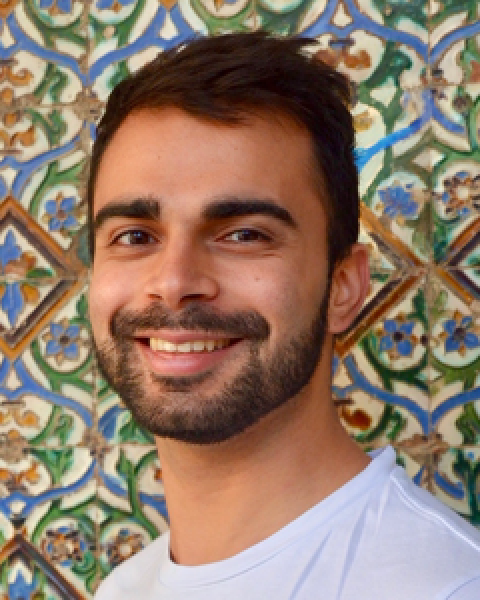
Matteo Lo Preti
Matteo Lo Preti received the B.Sc. degree in biomedical engineering from the University of Pisa in 2017 and the M.Sc. degree in bionics engineering cum laude from the University of Pisa jointly Scuola Superiore Sant’ Anna (Pisa, Italy) in 2019. He is concluding his Ph.D. program in BioRobotics at Scuola Superiore Sant’ Anna and the Soft BioRobotics Perception lab of Istituto Italiano di Tecnologia (Genova, Italy), focusing on soft sensing for tactile-driven intelligent systems. He collaborates at the EU FET-Open PROBOSCIS project to study how touch is exploited by elephants to develop a bioinspired artificial skin. His research interests include soft tactile sensing and tactile-based artificial intelligence.
New emerging concepts in biological touch and haptics neuroscience
In studies of biological touch sensing, and in engineered haptics systems taking inspiration from biology, it is often implicitly assumed that each skin sensor is activated independently of others. An implied consequence is that our skin as a sensing organ can be understood as a set of ‘taxels’, tactile pixels where each independent sensor have a specific tuning and that is all there is to know. Here, I review evidence that biological touch sensing instead rely on complex distributed mechanical couplings across the skin, causing the activation of large numbers of skin sensors. And because of the mechanical couplings, the activation pattern of each sensor has a dependency, or a specific relationship, to those of other sensors. This provides for extremely rich, high-dimensional information being generated in the nervous system whenever a haptic interaction is made. Recent neurophysiological data support this as the organizational principle for brain processing of haptic information. Further studies of the representations in the neocortex of haptic information implies a revision of how we view the neocortical circuitry function, with profound discrepancies to today’s dominating architectures of Artificial Neural Networks (ANN/DNN).
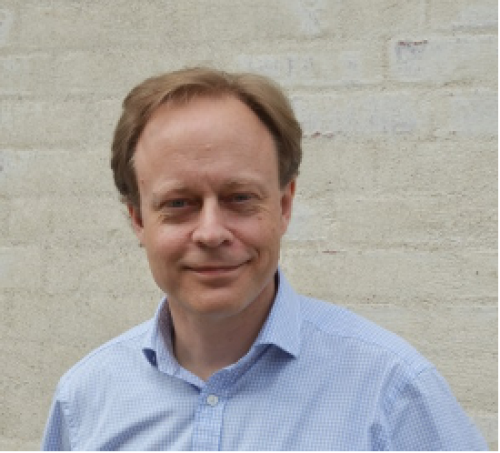
Henrik Jörntell
Prof. Henrik Jörntell received his Ph.D. degree in Neurophysiology 1997. He has been leading the lab Neural Basis of Sensorimotor Control, Medical Faculty, Lund University, since 2006. This lab features world leading in vivo neurophysiology and systems level/integrative neuroscience. Major contributions to the field come from the successful combination of systems level neurophysiology and intracellular recording technique, which have resulted in unique explanatory models of brain circuitry functionality and learning in sensorimotor control, as well as of deep insights into the integrated circuitry function of the central nervous system as a whole. Jörntell has some 80 publications in the fields of in vivo neurophysiology, computational and systems neuroscience, as well as neural network processing.
Jamie's Medley
SESSION 1: Social Media for researchers
Getting your work on social media may be easy - but making it popular is more challenging. This workshop takes you through the main social media channels and looks at how to create share-worthy content messages. Discover how to use social media to foster meaningful interactions and share your work with as many people as possible. Form tweets to live streams this interactive session is packed with ideas of how to maximise your use of social media as a researcher
SESSION 2: Beyond the lab
Researchers need to have a diverse skillset, from the ability to manage long and complex project to being able to form collaborations outside your field. This workshop will guide you through some of the most useful and important skills to have at your disposal. We will explore everything from efficient working through to impact beyond the academic.
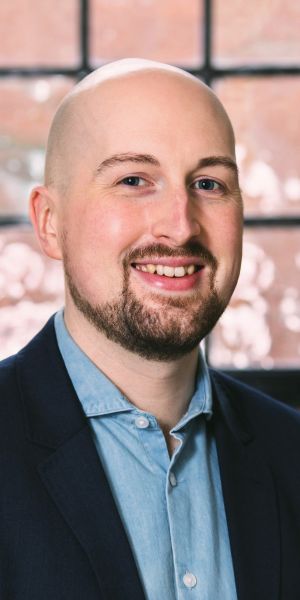
Jamie Gallagher
Dr. Jamie Gallagher is an award-winning communicator and engagement professional with ten years’ experience in the delivery and evaluation of quality engagement projects. Working across dozens of institutions and subject areas he has helped improve the reach, profile and impact of research engagement in almost every discipline
Organization Commitee

Chiara Bartolozzi
Chiara Bartolozzi is a Researcher at the Italian Institute of Technology. She is currently leading the Neuromorphic Systems and Interfaces group, with the aim of applying the "neuromorphic" engineering approach to the design of robotic platforms as enabling technology towards the design of autonomous machines. Chiara is project coordinator for Neutouch, an MSCA Innovative Training Network.
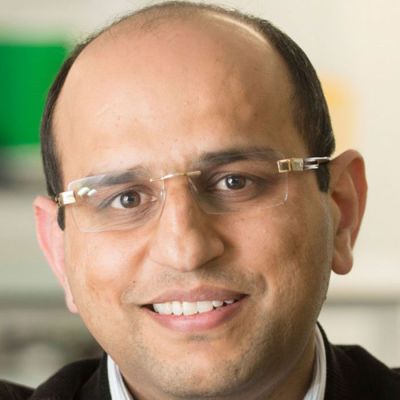
Ravinder Dahiya

Henrik Jörntell

Victoria Ashley Lang
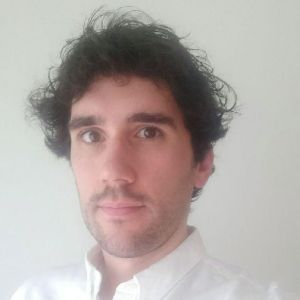
Alejandro Pequeño Zurro
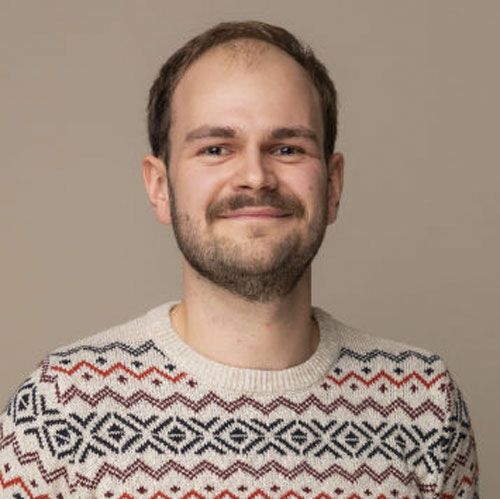
Luca Lach
